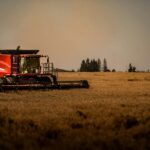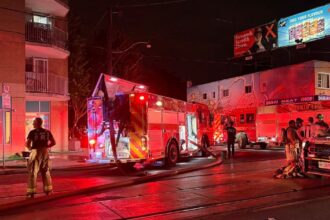As the morning fog lifted over Pimicikamak Cree Nation this weekend, residents breathed a collective sigh of relief. After weeks of uncertainty and displacement, community members have begun their journey home following one of Manitoba’s most threatening wildfire seasons in recent memory.
“Coming home feels like reclaiming a piece of yourself that was temporarily lost,” said Elder Joseph Monias, who returned Sunday with his family after nearly three weeks in temporary accommodations in Winnipeg. “The land calls to us, even when it’s been scarred by fire.”
The return operation, coordinated by the Canadian Red Cross and provincial emergency management officials, follows a crucial shift in weather patterns that brought desperately needed rainfall to northern Manitoba. According to Environment Canada, the region received approximately 30 millimeters of precipitation over the past week, significantly dampening fire activity and reducing smoke levels that had previously made air quality hazardous.
Chief David Monias confirmed that approximately 200 community members have already returned, with the remainder of the nearly 2,000 evacuees scheduled to arrive in phases throughout the week. “We’re prioritizing elders, families with young children, and those with medical needs for the initial return groups,” Chief Monias explained during a briefing at the community hall.
The Manitoba Emergency Measures Organization reports that while the immediate threat has subsided, the Cross Lake wildfire remains classified as “being held” rather than fully contained. Fire crews continue working to establish control lines, though favorable weather conditions have significantly reduced fire behavior and spread.
For returning residents, the emotional impact of the evacuation lingers. Community mental health worker Sarah Hart noted an increase in anxiety and stress-related concerns. “Displacement creates trauma, especially for those who’ve experienced evacuations in previous years,” Hart said. “We’ve established support circles and one-on-one counseling to help people process these experiences.”
The economic toll has been substantial as well. Local businesses faced complete shutdowns, and the community’s commercial fishery—a significant source of income—lost critical summer production weeks. Provincial officials have promised assistance through the Disaster Financial Assistance program, though community leaders express concern about the timeline and scope of support.
Infrastructure assessment teams have completed preliminary evaluations of community buildings, water systems, and power infrastructure. While no major structural damage was reported in residential areas, smoke damage remains a concern, particularly for those with respiratory conditions. Manitoba Hydro crews have restored full power service, though intermittent outages may occur as the system stabilizes.
“This isn’t just about returning to buildings; it’s about reconnecting with our land and our cultural identity,” said community councilor Rebecca Neepin. “Our people have deep relationships with these forests and waters that go beyond physical residence.”
The Manitoba government has pledged additional resources for recovery, including mental health supports, temporary housing solutions for those whose homes require remediation, and emergency funding for immediate needs. Provincial Indigenous Relations Minister Eileen Clarke visited the community yesterday, announcing a $2.3 million emergency response fund specifically for affected First Nations communities.
As climate patterns continue to shift, scientists warn that northern communities may face increasingly frequent wildfire threats. Dr. Michael Flannigan, fire ecologist at the University of Alberta, notes that boreal forest regions have seen a doubling of area burned since the 1970s. “What we’re witnessing isn’t an anomaly, but rather a troubling new normal that requires both mitigation and adaptation strategies,” Flannigan told CO24 News.
For the residents of Pimicikamak Cree Nation, immediate concerns focus on rebuilding community connections and resuming normal activities. School officials are working to prepare facilities for the upcoming academic year, while the local health center has reopened with expanded respiratory care services.
As Canada grapples with increasingly severe wildfire seasons across multiple provinces, how will traditional knowledge and modern emergency management systems evolve to protect vulnerable communities from these escalating climate threats?














